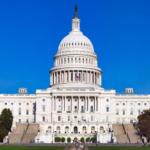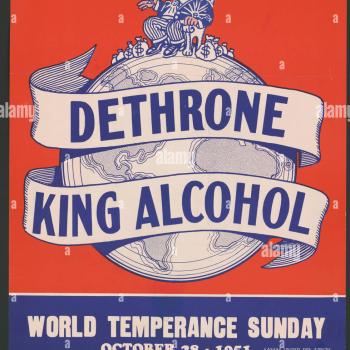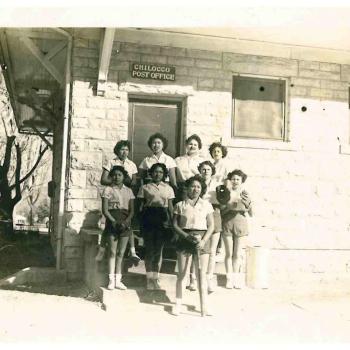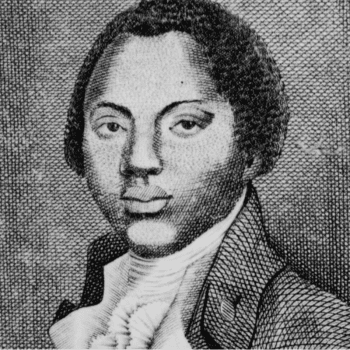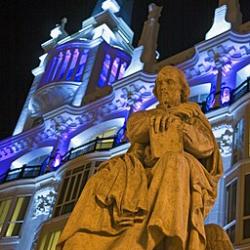When I began studying American history as a Ph.D. student at Brown University twenty years ago, I quickly realized that my professors and fellow students were operating by a different moral code than I was. It was not the purely secular moral code that I, as a conservative white fundamentalist Christian at the time, naively expected them to have. Instead, it was a rights-conscious moral code that seemed to draw on the moral fervor of Christianity, but without the name. Many of the people who shared this moral code had not visited a church in years, and few professed any love for Christianity. Yet they spoke as if they were driven by the moral zeal of a religious conversion.
In time, I realized that they had indeed been converted – not in a church or a revival service, but in the 20th-century American Great Awakening known as the civil rights movement.
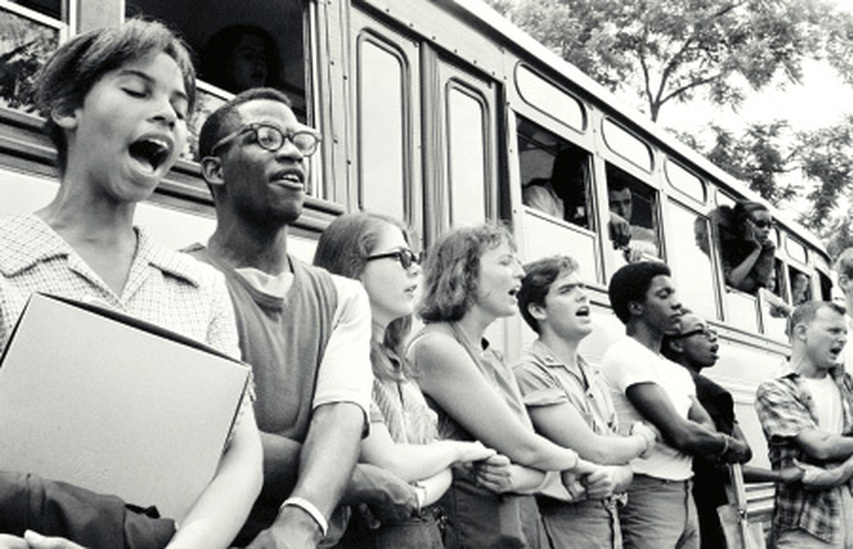
Indeed, nearly all of white academia had been baptized in this same religious revival, I found, and so had most white Democrats. And when I looked into the matter more closely, I found that this religious conversion experience explained the secularization and institutional decline of white mainline Protestantism and the tensions that many contemporary educated white evangelicals (especially evangelicals with graduate degrees in the humanities) experience as they try to reconcile the values that have been reinforced by their academic studies with a counter-perspective that they hear in church. Indeed, an understanding of the conversion experience that white mainline Protestants underwent in the civil rights movement of the 1960s might offer the best explanation for the moral clash of visions that has divided our nation and is currently rending several conservative evangelical denominations as they debate whether to endorse repentance for past racial injustices or warnings against “critical race theory.”
The fact that the civil rights movement was a religious revival of sorts is, of course, well supported by the historical evidence. Led in part by ministers in the Southern Christian Leadership Conference, supported by tens of thousands of Black and white Christians who believed Jesus was on the side of racial equality, and fueled by gospel music that was taken from the slave spirituals with only slight adaptation, the movement was inspired by an African American Exodus theology that had been forged in the fires of a centuries-long experience of injustice. No doubt, during the upcoming Black History Month, we will once again have opportunity to revisit these themes on Christian blogs and websites – as we should.
But what about the whites who participated in the movement? Did they experience a revival as well? The evidence suggests that they experienced not only a revival but also a conversion. This conversion had all the marks of a religious experience, yet for many, it was a conversion away from the Christian church. And if we want to understand what happened to American progressive politics after 1968 – and why progressivism became increasingly estranged from the rest of white America that did not experience this conversion experience – we need to ask what sort of conversion white progressives experienced on the march to Selma, Montgomery, or Birmingham in the 1960s.
The white American liberals who experienced the civil rights movement as either marchers or sympathetic observers were, by and large, Protestant, because most Americans in the 1960s were Protestant. This was even more true of the college-educated population, who were especially likely to be mainline Protestants.
Before the early 1960s, mainline Protestant clergy and academics had promoted a civil religion of Judeo-Christian democracy. Organized religion was good, and secularization was bad, mainline Protestant clergy in the 1950s said, because the values that Americans cared about – human dignity, equality, and, above all, democracy – depended on a spiritual view of human nature that atheism (especially in its materialist or Marxist variety) refused to recognize. This was the message that one would have heard even from the most liberal Episcopal bishops in the 1950s, but it is also what one would have heard from the president of Yale University or Oberlin College, both of which were still Protestant institutions representing the liberal consensus of the era. And though evangelicals and mainline Protestants were divided on many points during the 1950s, the idea that organized Christian religion was essential for the preservation of American freedom and the democratic order was a point of agreement that transcended all other theological divisions, uniting not only the majority of Christian ministers but also many academics and politicians.
The civil rights movement called this faith in institutional Christianity and the American state into question. Young white mainline Protestant seminarians who traveled South to Selma supported the movement initially because it accorded well with the values that they already held – that is, the values of racial equality and democracy, which all mainline Protestant denominations had been preaching for decades. But the whites who joined the movement quickly realized that the problem of institutional racism was much more pervasive and systemic than they had ever imagined when listening to polished white ministers denounce it in the comfortable, all-white, upper-middle-class sanctuaries of their home churches. Worse, they were dismayed to find that large parts of the white institutional American church were on the wrong side of the civil rights cause. Even at its best, they thought, the white American Protestant church gave the civil rights movement only tepid support, and more commonly, it was a platform for ministerial complaints about Martin Luther King Jr.’s “lawbreaking” and pious excuses for those who refused to get involved.
On the civil rights marches, the righteousness of the cause and the brotherhood and sisterhood of those in the “beloved community” who helped them bear witness in the struggle gave young white liberals a sense of moral fervor that nothing in the white church could ever equal. Some of them lost their faith in organized Christianity entirely. Many came to believe that “the mantle of prophecy has passed from the church to the movement, or at least that the movement constitutes the prophetic voice of the church,” as the progressive Mennonite sociologist Paul Peachey phrased it in 1964.
After the 1960s, mainline Protestant denominations experienced a decades-long continuous decline in membership. While the causes of the decline are complex, most analyses have pointed to one central factor: the failure of mainline Protestant churches to retain their children, first with the Baby Boomers, and then with Gen-Xers and millennials. And while a few of these youth left mainline Protestantism for conservative evangelical or Catholic churches, most became nonreligious. Yet in many cases – especially if they pursued graduate education – they retained the progressive political commitments that some of their pastors had acquired in the civil rights movement. But now that they had the moral commitment that came from the civil rights movement, they no longer saw the need for organized religion – especially organized religion that was not quite as fervent in its social justice commitments.
Even those who stayed lost most of their faith in the church’s moral authority. If church teaching contradicted their sense of morality, they followed their own moral compass – as pro-choice feminist Catholics did when they denounced their church’s teaching on abortion, or as numerous pro-gay rights Methodist clergy did in the early twenty-first century when they publicly defied their denomination’s prohibitions on same-sex weddings and risked being defrocked for their social justice stand. Though the post-civil rights socially conscious clergy might continue to wear a collar and preach in church, they now viewed their task as prophetic, not salvific, and they believed that their own internal moral compass of rights consciousness, bolstered by the quotations from Amos and Micah that they had learned from the Black civil rights leaders, provided all the legitimacy they needed to confront American society on the Vietnam War, wealth inequality, and the national alliance with apartheid South Africa. The real threat to society, they now believed, was no longer secularism or materialistic atheism, but instead the moral hypocrisy of racial injustice and inequality – and that was not merely an external threat, but was instead just as likely to come from within the US government or even from within their own congregations. Armed with this new truth, as they saw it, they were eager to confront the evils of organized Christianity and judge the church by this moral code rather than see the church as the moral beacon for society, as they might have only a few years earlier. Indeed, the clarion moral call of civil rights was the only foundational moral certainty than many mainline Protestant clergy now had. “Younger ministers,” University of Chicago Divinity School professor Langdon Gilkey wrote in the Christian Century in 1965, “are by no means sure of anything they learned in seminary – except perhaps on the subject of race relations.”
![The civil rights march from Selma to Montgomery, Alabama in 1965] - b&w film copy neg. | Library of Congress](https://tile.loc.gov/storage-services/service/pnp/cph/3d00000/3d02000/3d02300/3d02329v.jpg)
At exactly the same moment that white mainline Protestants underwent this conversion experience, white American academics did the same. Numerous nominally Protestant colleges cut their ties to the denominations that had long exercised at least minimal oversight over their affairs or, in other cases, acted as if those ties no longer mattered. College administrators gave up their attempts to police student sexual behavior and instead, like the students and faculty, embraced the new idea that social justice, not individual behavior (especially not individual behavior relating to consensual sex between adults), was all that mattered. But rather than fill this religious void with a vague commitment to secular academic freedom, as one might have expected, the humanities programs at least – and, to a large extent, the social sciences and programs in education and law – embraced the new moral commitment to racial justice as their raison d’être. Nowhere was this more evident than in programs in American history.
Before 1968, scholarship in American history had been driven largely by the mainline Protestant commitment to American democracy. Andrew Jackson, the subject of Arthur Schlesinger Jr.’s seminal monograph The Age of Jackson in 1945, was widely heralded as a pioneer of democracy, and Woodrow Wilson was to an even greater degree. Political history – and especially magisterial studies of American presidents and US diplomacy – thus held a privileged place in the academy. But in the late 1960s, this changed almost instantly, as a new generation of assistant professors, who were hired in large numbers due to the insatiable demand for new faculty that occurred as soon as the first Baby Boomers entered college, quickly came to dominate history departments and replace the values of their older colleagues with a new moral commitment driven almost entirely by the values that they had learned from the civil rights movement and opposition to the Vietnam War.
A quick look at the books selected for the Bancroft Prize, widely considered perhaps the most prestigious academic book award in US history, reveals this instantaneous shift. Before 1968, the vast majority of Bancroft award winners were books of political or diplomatic history, usually defined in the narrowest sense of the word. There was always a liberal sprinkling of presidential biographies; in 1967, for instance, the prize was given to the second volume of Charles Sellers’s multivolume biography of James Knox Polk (which covered the years 1843-1846; those who wanted to read about the second half of Polk’s one-term presidency would have to wait for the third volume). Page Smith’s biography of John Adams won the prize in 1963, and Arthur Link’s study of Wilson’s pre-war diplomacy received the award in 1961. But after 1968, no book like Sellers’s biography of Polk would ever again receive the award. Instead, the prize would be given in almost every year to at least one book on African American history.
When the Bancroft Prize Committee of 1968 gave the award to Henry Allen Bullock’s A History of Negro Education in the South, 1619 to the Present, it was the first time in the award’s decades-long history that a work of African American history won the Bancroft. But it was hardly the last. The following year, the Bancroft Award was given to Winthrop Jordan’s White over Black, and in 1970, it went to Dan T. Carter’s monograph on the Scottsboro boys. Indeed, for eight of the ten years from 1968 to 1977, a book on African American history or slavery received the Bancroft Award. Perhaps not coincidentally, nine of the ten authors of Bancroft award-winning books on African American history during these years were white. And most were young. Carter, for instance, was only 30 years old when his Scottsboro book won the Bancroft, and Jordan was likewise well under 40. Young enough to have been deeply shaped by the civil rights movement, they spent the rest of their writing careers producing monograph after monograph devoted to uncovering themes of racial injustice in American history. So did an entire generation of American scholars. And so did the next generation of academics they trained.
The Bancroft Prize selections were only a reflection of a much larger shift in the historical profession and in the broader academic world. Textbooks, college lectures, and prelim exam reading lists were quickly revised to take the new scholarship into account. Students of American history now learned a narrative that was largely driven by the new racial consciousness in the academy.
This was also the newfound view of the Democratic Party, especially after the party transformation that resulted from Robert Kennedy and Eugene McCarthy’s campaigns of 1968 and George McGovern’s presidential run in 1972 – campaigns that enlisted a new generation of Baby Boomer Democrats who had been politically mobilized by the causes of civil rights and opposition to the Vietnam War. For the next four decades or more, even the most centrist of Democratic presidential candidates, such as Bill and Hillary Clinton, were people whose politics had been shaped by the vision of the civil rights movement. And for that reason, there was usually very little discernible difference between the rights consciousness expressed in the mainline Protestant journal the Christian Century, the prevailing opinions among humanities professors, and the views of Democratic party leaders. To be sure, many humanities professors considered themselves well to the political left of particular Democratic presidential nominees, but these were usually matters of degree, not orientation, because both groups shared a common belief in the values they had learned from the civil rights movement.
Because of this value shift in mainline Protestantism and the academy – which the Republican Party, after the 1970s, refused to embrace, but which the Democratic Party, of course, did – graduate-educated whites and mainline Protestant clergy left the Republican Party in droves in the late 20th century, since they now considered its stances on race, poverty, and other human rights morally objectionable. Among American voters with at least some postgraduate education, Democrats now outnumber Republicans by nearly two to one. And among college faculty, the moral outrage against the Republican Party has become so strong that a comprehensive 2017 social science survey revealed that 39 percent of the nation’s fifty-one leading liberal arts colleges did not have a single Republican among the tenured or tenure-track faculty, and an additional 39 percent had a faculty that was less than 1 percent Republican. Strikingly, after surveying the voter registrations of more than 8,000 liberal arts faculty, the authors of the study could not find a single anthropologist who was a registered Republican. By comparison, departments of history were slightly more balanced; there, registered Democrats outnumbered registered Republicans by only 17 to 1.
To register as a Republican in 2017, a humanities or social sciences professor would have had to implicitly reject the assumed values that had guided the humanities disciplines for the previous half-century – which is why, in many elite colleges, registered Republicans among the humanities and social science professors were almost as rare as young-earth creationists among the biologists and paleontologists.
What values did those shaped by the moral vision of the civil rights movement believe they were defending when they voted Democratic? A commitment to equality and human rights was the foundational principle, but beyond that was an assumption that structural racial inequality – along with other inequalities, including those of gender, sexuality, and social class – was deeply embedded in American society, and that only an ongoing political commitment to social justice could address these inequities.

Those who never experienced the transforming religious conversion of the civil rights movement held a very different worldview, and as a result, they became increasingly suspicious of both the Democratic Party and university humanities faculty. Initially, they were often suspicious of mainline Protestant clergy as well, but as membership in those denominations declined to the point of near-irrelevance in much of the country, progressive Protestants no longer received much attention in conservative complaints. But Democratic politicians and professors, both of whom seemed to have more influence, remained popular targets.
Because their worldview had as its foundation a commitment to racial equality, the rights-conscious progressives believed that their white conservative opponents were committed to the preservation of inequality. It would be more accurate to say, I think, that many mainstream white conservatives (the vocal racist fringe excepted) were committed to racial integration and equality under the law, but disagreed with the progressives about the pervasiveness of structural racism in contemporary American society.
This created a dilemma for white evangelicals who entered academic programs in the humanities at any point after the 1970s, because they were confronted with an internal clash of moral visions. Their readings and coursework were constructed almost entirely around a moral vision – a commitment to rights-conscious equality forged in the fires of civil rights activism – that, in all likelihood, their own churches had never fully shared. If they fully adopted this vision, they would likely spend the rest of their lives critiquing their own church traditions, hoping that their fellow believers would experience the moral conversion that they themselves had and see the light. Maybe they would even leave their church tradition altogether, believing that they could no longer tolerate a worldview that they now thought amounted to racism.
And that’s the dilemma that many white evangelicals still face. This past year, the struggle has been particularly acute because national political events made it impossible to ignore. How churches responded to the killing of George Floyd, the demonstrations of Black Lives Matter, the presidential contest between the Trump-Pence ticket and the Biden-Harris campaign, and, most recently, the attack on the US Capitol, offered fresh opportunities for conflict between those whose vision had been shaped by the civil rights conversion experience and those who had not.
It would be easy to say that the whites who converted to civil rights activism are right, and those who never saw the light are simply wrong. But I don’t think it’s that simple. Like most historians of modern America, I have been shaped by the civil rights conversion experiences of my academic mentors, and after years of reading African American voices, there is no way that I can deny the structural racism that has pervaded the United States from its inception and continues to plague it today. And so, in that sense, I believe that the whites who experienced a conversion to anti-racism as a result of their encounters with Black activists were correct. But as a Christian, I am also deeply suspicious of moral conversions that move one away from church and even away from Jesus – which is, sadly, what happened to a lot of whites who became more secular even as they became more morally fervent. This was especially ironic, given that their secular conversions occurred in a movement was largely led by Black Christians, including many pastors. It is also tragically ironic that their secularized view of racial justice caused them to become further removed from the worldviews of most African Americans, the demographic group in the United States who are most likely to be churchgoing Christian believers today. By making a particular needed moral cause an ultimate cause – as though it could substitute for God – and leaving the spiritual out of the equation entirely, they undermined their own ability to fully comprehend the African American civil rights voices that had initially inspired them – which is why, even today, there is a substantial difference in viewpoints between white secular Democratic progressive Democrats and African American and Hispanic Democrats, who are much more likely to have a worldview shaped by Christian faith.
In the year that the Bancroft Prize committee gave its first award to an African American author, it also awarded the prize to Richard Lyman Bushman for his book From Puritan to Yankee, a study of how New England Puritans gradually let their Calvinist faith commitments lapse and became instead worldly minded Yankees. After that volume, except for three more books on the 17th century, no book whose primary subject was American religion would receive the Bancroft Prize until 1995. It was as though among all the scholarship on the moral issue of racial justice, American historians found no room to inquire about the deeper spiritual beliefs that had inspired those moral commitments to begin with. Like Bushman’s Puritans-turned-Yankees, they might have retained a heightened moral consciousness even in the absence of the original faith, but there was something hollow and desiccated about a moral cause with no spiritual grounding – and without any grace for those who did not believe in the cause to the same extent.
Perhaps what the white progressives needed to experience in the civil rights era of the 1960s was not conversion, but repentance. And perhaps if they had, they would have returned to their churches with a humble determination to learn from African American Christians, renounce their past blindness, fight structural racism, and show love and mercy toward those in their own churches whose perspective might differ. But without Christ, that grace was lacking. And so today, a half century later, we are left with the polarizing conflict between white Christian conservatives who don’t understand the conversion that others experienced on the road to Selma and white secular liberals who don’t understand how the conservatives could remain so blind.


